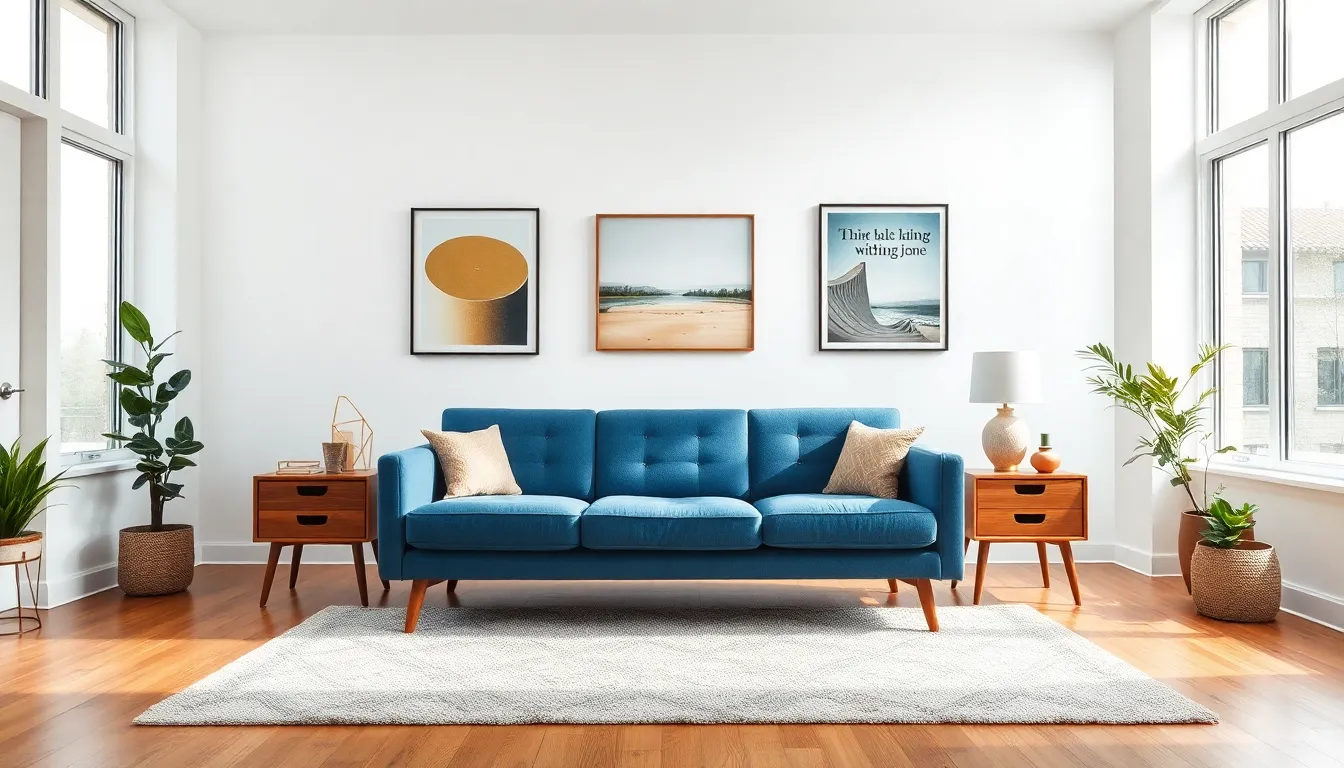When it comes to turning a house into a home, design and decor play pivotal roles. Ever walked into a space and felt an instant connection? That’s not magic: it’s the art of design speaking to you. Whether you’re trying to create a cozy nook for book reading or a vibrant area for entertaining, understanding the principles of design can elevate your space from blah to breathtaking. Let’s jump into the world of aesthetics and functionality to unlock the secrets of transforming your surroundings with flair.
Table of Contents
ToggleUnderstanding The Principles Of Design

Key Elements Of Interior Design
At its core, interior design revolves around five essential elements: space, line, forms, light, and color. Each of these plays an integral role in creating not just a visually appealing environment but one that feels right.
- Space is the canvas. It sets the stage for everything else, dictating how everything else can fit together.
- Line guides the eye around a room, helping create a sense of structure. Vertical lines can add height, while horizontal lines offer calming effects.
- Forms arise from the combination of lines. They bring three-dimensionality into our spaces, transforming designs into shapes that invite touch.
- Light illuminates every design choice. Natural light can expand a space, whereas ambient lighting can create warmth and intimacy.
- Finally, color influences emotions and sets a room’s mood.
Understanding these elements is the first step in crafting creative and purposeful decor.
Color Theory And Its Impact On Mood
Colors do more than just fill up a wall: they resonate with our feelings. For instance, blues often evoke calmness while reds pulse with energy. This dynamic nature of colors means they can drastically alter perceptions.
When embarking on decorating a space, it’s beneficial to consider the mood you want to cultivate. A serene bedroom might integrate soft blues and gentle greens, while an active playroom could burst with yellows and oranges. By harmonizing colors according to their psychological effects, one can dictate how an area feels at a glance.
Textures And Materials In Decor
Incorporating Natural Elements
Tactile experiences, these are what textures add to our environments. Incorporating natural elements like wood, stone, and plants revitalizes spaces, enhancing the aesthetic as well as the sensory appeal.
Imagine a sleek, modern kitchen featuring warm wooden accents or a cozy living room anchored by a stone fireplace. Natural textures evoke a sense of connection with the outdoors. They invite comfort and can elevate the atmosphere of any room dramatically.
Don’t forget plants. They breathe life into spaces, purifying the air and bringing a dose of serenity.
Choosing The Right Furniture And Accessories
Selection of furniture isn’t just about function: it’s about style. The right piece can act as a statement, serving both practical needs and enhancing the decor.
Opt for furniture that complements the overall theme, whether it’s plush seating for a classic space or angular designs for a modern vibe. Accessories, think rugs, cushions, and artworks, are the finishing touches that tie everything together, so choose wisely.
Popular Design Styles To Consider
Modern Minimalism
Minimalism isn’t just a design trend, it’s a lifestyle choice. This style emphasizes simplicity, functionality, and calmness. Neutral palettes typically dominate modern minimalism, supporting an uncluttered appearance that promotes peace. Think clean lines, open spaces, and a lack of ornate decorations. It’s all about essentials.
Incorporating minimal furniture can retain the focus on spaciousness, allowing for an airy and open feeling.
Classic Elegance
On the flip side lies classic elegance, a style that celebrates intricate detailing, rich colors, and complex forms. Here, opulence reigns, with sumptuous fabrics, chandeliers, and period pieces stealing the show. Classically designed spaces embody timelessness, exhibiting both grace and strength with the right furniture and fixtures that tell their own stories.
Eclectic Vibes
Mixing Patterns And Textures
If variety is the spice of life, eclectic decor is the perfect showcase. This style champions individuality, encouraging a blend of different textures, patterns, and colors. Layering becomes an art form, combining vintage finds with modern pieces effortlessly.
It’s important to maintain a sense of balance. Successful eclectic decor should feel harmonious rather than chaotic. This may involve sticking to a consistent color palette while mixing different materials or design eras.
Personalizing Your Space
The Role Of Art And Personal Touches
Every space tells a story, and adding personal touches solidifies that narrative. Artworks, family photos, or souvenirs from travels evoke memories and emotions, making spaces uniquely yours.
Encourage self-expression through decor by choosing pieces that resonate personally. A stunning gallery wall can be more than just aesthetic: it becomes a focal point of connection and pride.
Creating A Cohesive Theme
Balancing Functionality And Aesthetics
Achieving balance between functionality and aesthetics is a crucial aspect of design.
One doesn’t have to compromise on beauty for the sake of practicality. Think about flow, arranging furniture to help movement while simultaneously creating eye-catching focal points. A well-edited collection can enhance beauty without causing chaos in daily activities. Cohesion in design can bring together disparate elements, making them feel intentional instead of accidental.


